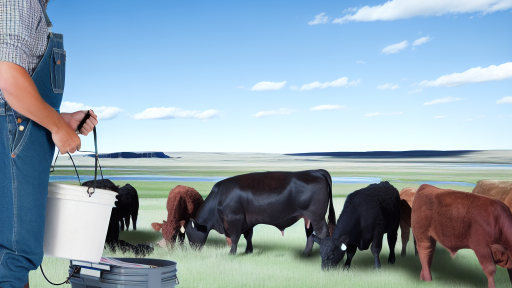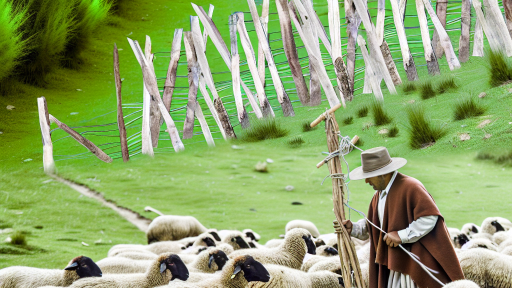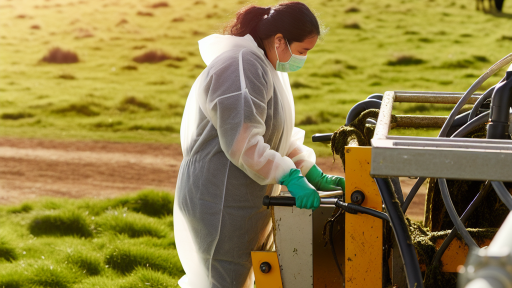Understanding Exotic Livestock
Defining Exotic Livestock
Exotic livestock refers to species not commonly farmed.
These animals differ from typical livestock like cattle and pigs.
Farmers often raise them for unique products and diversification.
Furthermore, they can offer significant economic benefits.
Popular Breeds in Exotic Livestock Farming
Several breeds stand out in exotic livestock farming.
Each breed has unique characteristics and benefits.
Miniature Donkey
The miniature donkey is a friendly and gentle breed.
They are ideal for small farms and hobbyists.
Additionally, they are low maintenance and thrive on minimal space.
Kune Kune Pig
Kune Kune pigs are renowned for their docile nature.
They make excellent companions and offer high-quality meat.
Moreover, they are grazers and enjoy family interaction.
Emu
The emu is a large flightless bird native to Australia.
They are a resilient breed that adapts well to various climates.
Emus provide valuable meat and oil, popular in culinary uses.
Transform Your Agribusiness
Unlock your farm's potential with expert advice tailored to your needs. Get actionable steps that drive real results.
Get StartedAdvantages of Raising Exotic Breeds
Raising exotic breeds can enhance biodiversity on farms.
They attract niche markets and potential high profits.
For instance, unique products often have less competition.
Economic Benefits
These animals can lead to increased income streams.
Farmers might sell not only meat but also specialty products.
Examples include eggs, fibers, and ornamental value.
Attracting Tourism
Exotic livestock can draw visitors to agritourism sites.
People often seek experiences with unique animals.
This can boost local economies through tourism-related activities.
Factors to Consider When Selecting Breeds
Adaptability
Adaptability plays a crucial role in successful exotic livestock farming.
Choose breeds that adjust well to varying conditions.
Look for animals that thrive in different environments.
Consider factors like feed availability and space requirements.
Some breeds perform better in specific habitats.
Research local farming practices for insight.
Consult with local breeders for breed suitability.
Climate
Climate significantly affects livestock health and productivity.
Identify breeds that can withstand local weather extremes.
For example, heat-tolerant breeds are essential in hotter areas.
Cold-resistant animals thrive in harsher climates.
Analyze both summer and winter conditions in your area.
Inspect any climate-related health risks for chosen breeds.
Consider seasonal variations when making breed selections.
Environment
The environment directly influences breed selection.
Showcase Your Farming Business
Publish your professional farming services profile on our blog for a one-time fee of $200 and reach a dedicated audience of farmers and agribusiness owners.
Publish Your ProfileEvaluate land and space availability on your farm.
Ensure the environment supports the breed’s natural behavior.
Some breeds require larger spaces than others.
Assess the quality of pasture and food sources available.
Look for breeds that are efficient in waste management.
Moreover, consider integration with other farming practices.
This promotes a sustainable farming approach.
Assessing Market Demand
Understanding Market Dynamics
Market dynamics influence the success of exotic livestock farms.
Understanding these dynamics is crucial for selecting the right breed.
Researching local market conditions provides valuable insights.
Additionally, trends in consumer preferences shape livestock choices.
Identifying Potential Buyers
Identify potential buyers to gauge market interest.
Local restaurants, butcher shops, and specialty stores often seek unique breeds.
Direct sales to consumers can also be a profitable avenue.
Engaging with community members enhances buyer relationships.
Researching Market Trends
Stay updated on industry trends to make informed decisions.
Analyzing reports from agricultural organizations offers useful data.
Attend trade shows and seminars to network with industry experts.
Online forums and social media can provide real-time insights.
Evaluating Demand for Specific Breeds
Evaluate demand for specific breeds in your region.
Research the popularity of unique breeds like Miniature Zebu or Kunekune pigs.
Conduct surveys to collect feedback from potential buyers.
Use this information to guide breed selection effectively.
Adapting to Consumer Preferences
Consumer preferences often shift due to changing lifestyles.
Organic and free-range options are increasingly in demand.
Consider how shifts might affect your livestock choices.
Being flexible allows you to adapt to emerging market demands.
Find Out More: Record Keeping Tips for Sheep Farmers
Evaluating Health and Resilience
Disease Resistance
Selecting exotic livestock involves understanding their disease resistance.
Different breeds show varying levels of immunity to specific diseases.
Research indicates that some breeds have natural resistance to common pathogens.
When selecting, prioritize breeds known for their health advantages.
For example, certain goats possess resistance to parasites.
Additionally, evaluate the historical health records of breeds.
These records reveal patterns in disease outbreaks and recovery rates.
Consulting veterinarians can provide deeper insights into breed health.
Moreover, consider biosecurity measures during livestock selection.
Strong biosecurity can bolster livestock health further.
Longevity in Exotic Livestock
Longevity is a critical factor when selecting exotic livestock breeds.
Longer-lived animals tend to provide more value over time.
Showcase Your Farming Business
Publish your professional farming services profile on our blog for a one-time fee of $200 and reach a dedicated audience of farmers and agribusiness owners.
Publish Your ProfileUnderstanding genetic factors can help predict longevity in breeds.
Some breeds have been selectively bred for a longer lifespan.
It’s necessary to observe the life expectancy averages for different breeds.
Furthermore, consider the impact of environmental conditions on longevity.
Animals thriving in diverse conditions often demonstrate robust health.
Finally, ensure proper nutrition and care to enhance lifespan.
A well-cared-for animal often outlives its poorly maintained counterparts.
Explore Further: Common Challenges in Livestock Handling Solutions
Cost Analysis: Initial Investment vs Long-term Returns
Understanding Initial Investment
Starting an exotic livestock business requires careful planning.
Each breed has unique initial costs associated with its purchase.
Additionally, infrastructure expenses significantly contribute to the upfront investment.
Choosing the right breed impacts the overall financial commitment.
For example, rare breeds often have a higher price tag.
However, they may attract niche markets willing to pay premium prices.
Lesser-known breeds sometimes come at a lower price point.
Yet, their marketability can vary greatly.
Evaluating Long-term Returns
Long-term returns encompass various factors beyond initial costs.
Breeds with higher reproductive rates can enhance profitability.
Moreover, adaptability to local conditions impacts their sustainability.
Consideration should extend to the economic factors of demand and supply.
Some breeds produce more milk or meat over time.
Subsequently, these breeds can provide superior returns on investment.
Conversely, exotic breeds might face market volatility.
Thorough market research helps mitigate this risk.
Calculating Break-even Points
Breaking even is essential for any business’s success.
Initial costs must align with operational expenditures and revenue generation.
Estimating timeframes for return on investment guides financial planning.
Understanding break-even calculations is key to maintaining profitability.
Consider both fixed and variable costs in your calculations.
Utilize financial forecasting to set realistic timelines.
Considering Market Demand
Market demand significantly influences long-term returns.
Trending breeds can generate higher profit margins over time.
Research local and national market trends consistently.
Entrepreneurs should assess buyer preferences and needs.
Networking with industry experts can offer valuable insights.
Attend livestock fairs and exhibitions to understand market dynamics.
Investment Considerations
Budgeting for unforeseen expenses is a prudent approach.
Insurance protects against financial losses from livestock diseases.
A diversified livestock portfolio could minimize risks.
Choose breeds that complement one another in terms of care and upkeep.
Showcase Your Farming Business
Publish your professional farming services profile on our blog for a one-time fee of $200 and reach a dedicated audience of farmers and agribusiness owners.
Publish Your ProfileEvaluate the long-term commitment, as livestock requires constant management.
Consult with financial advisors for tailored investment strategies.
Gain More Insights: Environmental Impact Of Livestock Waste Disposal

Breeding for Purpose: Meat, Milk, Fiber, or Companionship
Choosing Animal Types for Different Needs
Selecting the right breed is crucial for success.
Choose animals based on the specific purpose you have in mind.
For meat production, the breed’s growth rate and carcass quality matter.
In contrast, milk breeds should focus on yield and quality.
Fiber-producing animals require different traits than those raised for meat.
Additionally, some people seek companionship from their animals.
Meat Production Breeds
Meat production requires careful breed selection.
Consider breeds like the Angus for high-quality beef.
Pork production often highlights the Yorkshire breed for rapid growth.
For lamb, the Suffolk breed is renowned for its meat quality.
Market demand influences breed choice in meat production.
Milk Production Breeds
Breeds chosen for milk must provide high yields.
For instance, Holsteins are among the top milk producers.
Additionally, Jersey cows offer rich, creamy milk with high butterfat content.
Farmers should evaluate their market to select the best breed.
Fiber-Producing Breeds
Fiber production has unique breed requirements.
Sheep breeds like Merino are preferred for their wool quality.
Alpacas are popular for their soft and warm fleece.
Consider the local demand when selecting fiber breeds.
Choosing Companion Animals
Companionship is a rewarding focus in animal husbandry.
Breeds like goats and llamas provide excellent companionship.
Miniature donkeys are also becoming popular as friendly pets.
Select animals that best fit your lifestyle and environment.
Social traits should guide your breed choices for companionship.
Delve into the Subject: Innovative Technologies In Waste Management
Sustainability Practices
Choosing Eco-Friendly Breeds
Selecting breeds that align with sustainability goals is crucial for exotic livestock success.
Eco-friendly breeds often require fewer resources, which promotes conservation.
For instance, consider heritage breeds that thrive in local climates.
They exhibit resilience to diseases and environmental changes.
Additionally, these breeds maintain genetic diversity in livestock populations.
Assessing Environmental Impact
Evaluate the carbon footprint of the breeds you choose.
Some breeds produce less methane, benefiting the environment.
Furthermore, selecting breeds that forage effectively can enhance land use.
This approach reduces the need for supplemental feed.
Adopting Integrated Practices
Implementing holistic management techniques can improve sustainability.
Integrated livestock systems utilize synergy between animal and plant production.
For example, utilizing livestock for natural weed control decreases chemical use.
Showcase Your Farming Business
Publish your professional farming services profile on our blog for a one-time fee of $200 and reach a dedicated audience of farmers and agribusiness owners.
Publish Your ProfileThis practice also enhances soil health and biodiversity.
Researching Local Adaptations
Investigate breeds that are well-adapted to your local conditions.
Local adaptations often lead to improved performance and lower inputs.
Consult local agricultural extension services for breed recommendations.
Networking with other exotic livestock farmers can also provide insights.
Long-Term Goals and Practices
Align your breed selections with long-term sustainability goals.
Consider how breed choices can impact future generations of farmers.
For example, establishing breeding programs can enhance desirable traits.
Ultimately, planning for sustainability today ensures a better tomorrow.
Legal Considerations
Zoning Laws
Understanding zoning laws is essential for exotic livestock owners.
These regulations vary greatly by location.
Some areas strictly prohibit certain exotic animals.
Other regions require specific permits before keeping them.
Investing time into local regulations aids in compliance.
Consulting with local zoning offices provides clarity.
Permits
Obtaining permits is crucial for legal livestock ownership.
Different types of permits exist based on animal species.
Some permits are easy to acquire, while others are complex.
For instance, acquiring permits for reptiles may differ from those for large mammals.
Always check with your state’s Department of Agriculture.
This step ensures you’re following all legal requirements.
Regulations for Exotic Livestock
Exotic livestock often falls under unique regulations.
Many of these are designed to ensure public safety.
Wildlife laws may protect certain species from private ownership.
Researching federal, state, and local guidelines is necessary.
Compliance with health and safety codes is also crucial.
Maintaining accurate records of ownership is advisable.
Consulting Legal Professionals
Engaging legal professionals can simplify the process.
They provide insights into complex laws surrounding exotic animals.
Moreover, they help navigate changes in regulations.
Consider hiring an attorney specializing in agricultural law.
This investment can prevent costly legal complications in the future.
Thus, staying informed ensures the successful and lawful keeping of exotic livestock.
Additional Resources
Sustainable breeding programmes for tropical farming systems




